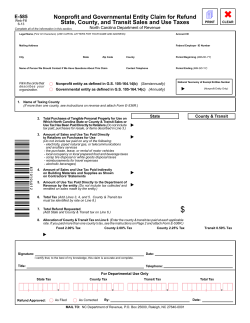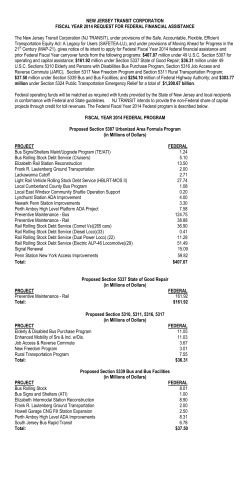
22 Fillmore Transit Priority Project Overview
22 FILLMORE 22 Fillmore - 16th Street Transit Priority Project SAFER STREETS, WIDER SIDEWALKS, RELIABLE SERVICE Project Overview MUNIFORWARD.COM BY THE NUMBERS RELIABILIT Y Reduce travel time by almost 25% WITH YOUR SUPPORT, WE’RE MOVING MUNI FORWARD. for the overall 22 Fillmore route Increase service by adding SERVICE The 22 Fillmore carries nearly 17,000 customers on an average weekday. As part of Muni Forward, SFMTA is proposing transit priority and safety improvements along the route that will make it safer to walk and bike, increase the reliability of service, and enhance the customer experience on and off the bus. 2 MORE BUSES PER HOUR = PROJECT FEATURES SUMMARY Before 20% MORE SERVICE After Dedicated transit lanes allow buses to bypass traffic, reducing delay and making for a smoother ride. New Transit Bulb BENEFITS: Reliable Service Wider sidewalks at bus stops or boarding islands allow buses to board passengers without having to pull out and then back into congested traffic. They also provide space for shelters, signage, and other amenities. BENEFITS: Reliable Service, Safer Streets, Rider Comfort, Sidewalk Space NEW TRANSIT BULBS DEDICATED TRANSIT LANES Note: The above conceptual figure is not to scale and is for illustrative purposes only. SAFET Y Establish Transit-Only Lanes. A transit-only lane is a travel lane that is dedicated for the exclusive use of transit vehicles. Transit-only lanes are typically identified with signs and pavement markings. Transitonly lanes can reduce transit travel times by allowing transit vehicles to bypass traffic congestion and avoid conflicts with other vehicles in mixed travel lanes. Non-transit vehicles are generally permitted to enter transit-only lanes to access curbside parking or to complete a turn, unless specifically prohibited. Emergency vehicles may use transit-only lanes at all times, and often taxis may also use these lanes. Transit-only lanes can be created by removing an existing travel lane or by removing a parking lane. SOURCE: SFMTA, Turnstone Consulting, Fehr & Peers, Jungle Communications 14 INTERSECTIONS with wider sidewalks for safer pedestrian crossings and quicker bus boardings EXPANSION OF OVERHEAD WIRE SYSTEM Note: The above conceptual figure is not to scale and is for illustrative purposes only. Expansion of the overhead wire system allows a direct, zero-emission transit connection between development at Mission Bay and the 16th Street BART Station, the Mission District, and Fillmore Street. BENEFITS: Reliable Service Install Transit Bulbs. Transit bulbs are sidewalk extensions at the location of a transit stop, typically about the same width as the adjoining parking lane. They can reduce transit travel times on bus routes by eliminating the need for buses to exit and re-enter the flow of traffic to access curbside transit stops and on rail lines by providing a place for boarding passengers to wait directly adjacent to a stopped light rail vehicle (LRV), thereby eliminating the time needed for passengers to walk from the curb across a parking lane to the LRV. Transit bulbs also provide added space for customer amenities such as shelters, improve pedestrian safety by shortening the street crossing distance, and reduce the speed of turning traffic, as well as reducing sidewalk crowding at transit stop locations. SOURCE: SFMTA, Turnstone Consulting, Fehr & Peers, Jungle Communications Extension of the bicycle route on 17th Street allows for a safe and attractive parallel east-west connection for people on bicycles. BENEFITS: Safer Streets EXTENSION OF THE BICYCLE ROUTE For general information 24/7/365, dial 311 (415.701.2311 outside SF). January 14, 2015 Marshall Elementary School San Francisco, CA ความช่วยเหลือทางภาษาโดยไม่เสียค่าใช้จ่าย
© Copyright 2025





















